Artificial intelligence
AI: once a mere tool – soon a partner on equal footing?
Artificial intelligence – AI – is not just all over the media, but is also making its way into our work environments, from industrial manufacturing to research. But how can we best exploit potential synergies of man and machine, and what must we consider? Here are some thoughts from Pierangelo Gröning, until recently a member of Empa's Directorate.
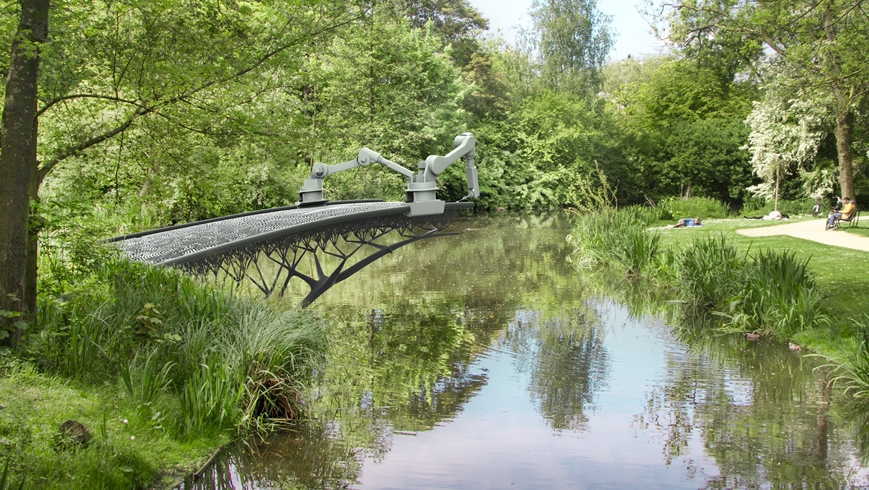
Computers and the Internet are core technological pillars of our increasingly digitized society, enabling data to be accessed, processed and exchanged at speeds far beyond human capabilities. And when it comes to physical work in the real world, robots have revolutionized industrial manufacturing processes by performing these tasks faster, more reliably and with greater endurance and precision than is possible for us humans.
With the increasing spread of artificial intelligence (AI), these technologies are likely to evolve from mere aids and "vicarious agents" to (more or less) equal partners in human endeavors in the not too distant future. They will not only perform assigned tasks accurately and highly efficiently, as they have in the past, but they will also devise, suggest and, if necessary, perform them independently. Computers, robots and AI will thus become work colleagues, giving the term "human-machine interaction" a completely new quality.
In general, collaboration is particularly successful when both the strengths and weaknesses of the partners involved are known, all partners focus first and foremost on their strengths and apply them in a goal-oriented manner. This will equally apply to collaboration with "robot colleagues" or "AI colleagues"; indeed, it will be essential. A key factor is the correct positioning of the interface between human and machine, so that the synergy potential of the "team" is exploited to the fullest – and, above all, to the benefit of the human being!
The first widely known applications are robots in care and rehabilitation, chatbots for customer service, or the almost ubiquitous ChatGPT. The latter now enables everyone to access AI and, thanks to self-learning algorithms, provides plausible answers to (almost) any question on the basis of the data available on the Internet; it even generates entire texts (more or less meaningful depending on the problem at hand) by means of a few keywords, whether as a summary, in prose or as poetry, to name but a few.
In science and research, AI and the underlying machine learning algorithms have long been everyday tools. Whether it is to use AI, similar to digital route planners, to compile the reaction steps of complex (bio)chemical synthesis pathways from the starting substances to the final products, or to optimize process parameters in complex manufacturing processes such as 3D metal printing, to name just two areas of application from research at Empa.
For society as a whole, however, everyone agrees that dealing with AI and AI-based systems will be an enormous challenge. Social networks and the algorithms behind them, which follow their own business or "like" logic – with all the well-known side effects such as fake news, etc. – are a first small taste of this. The risk of job losses is another issue we have to face as a society.
The key question: How can AI be made socially acceptable?
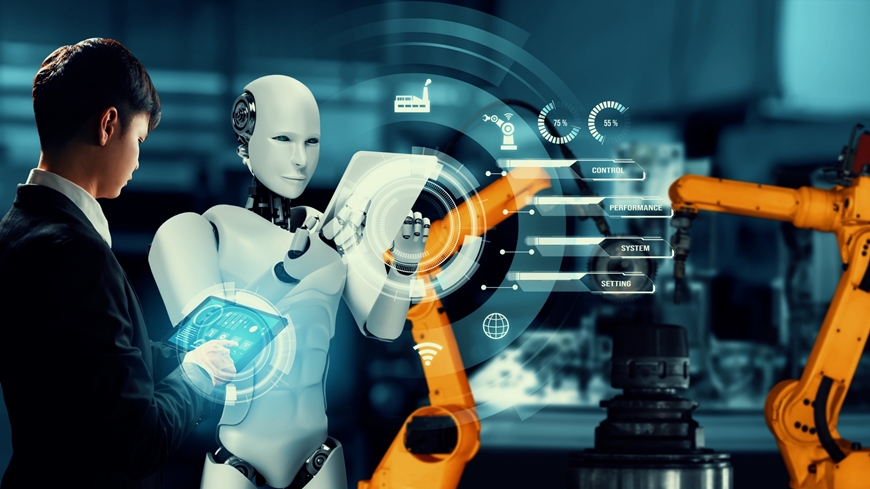
Aware of this, governments, NGOs and other stakeholders are currently discussing measures and regulations on how AI can be made socially acceptable, to put it bluntly. On the other hand, the large US tech companies that offer and distribute AI and use it for their own commercial success promise to manage AI in a responsible manner. Will that be enough?
In order to establish a harmonious coexistence between humans and AI, it will be necessary to reflect on the values and role of humans in a world with AI. Addressing very fundamental questions such as "Is an AI-generated painting art – or is it simply a composition of colors on canvas?" or "Can a novel written by AI be considered literature?" – in other words, what actually is creativity? – will perhaps help to use AI sensibly and for the benefit of mankind.
As far as industrial manufacturing is concerned, the EU Commission has already developed the vision ”Industry 5.0 – Towards a Sustainable, Human-centric and Resilient Industry”[1] in 2020 and described it as follows: "Industry 5.0 profoundly restructures human tasks in the realm of manufacturing in ways that benefit the workers. They will be upskilled to shift from manual to cognitive labor, to provide value-added tasks in production and to work – with peace of mind – alongside an autonomous workforce."[2]
However, AI and AI-supported systems will also massively change the research and development landscape. On the one hand, AI will significantly shorten development cycles and – as a result – bring applied research and development even closer together, even to the point of merging in certain areas. In extreme cases, applied research could even become obsolete, because problem-solving-optimized AI will provide a suitable answer to every clearly defined question – in other words, a product. Commercial success is thus likely to become a central indicator for assessing the quality of this type of "research".
On the other hand, the primary product of research – data – is of outstanding importance. Because how does AI learn? How does it continue to develop? By constantly being fed with new – and above all reliable – data. Mind you: non-AI-generated data, so it needs input from outside! This should give additional impetus to the Open Data policy, the free access to research data. If this does not happen, or not to a sufficient extent, or only with "qualitatively inferior" data, AI will soon deliver the same thing over and over again, or – even worse – probably only nonsense.
Finally, to achieve real progress, new and inventive breakthrough science is still direly needed. Despite the immense possibilities that AI opens up for research, the basis for achieving scientific quantum leaps or opening up new scientific horizons will continue to be curiosity, perseverance and intuition. And above all, a pronounced culture of failure, because you only learn from mistakes, from failure – whereas AI is primarily designed to avoid mistakes. These virtues must be preserved at all costs; they must not be allowed to fall victim to the lure of quick success made possible by AI.
Communications
Phone +41 58 765 4592
redaktion@empa.ch
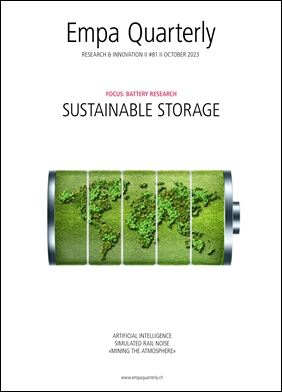
Empa Quarterly#81 Battery research
Being able to store energy is a central pillar of a sustainable energy system, since solar and wind energy are not always available in sufficient quantities when they are needed. Good batteries are indispensable for the energy transition, and thus for a more sustainable world. Empa researchers are developing batteries for different applications, from stationary energy storage to electromobility. They are also working on analyzing and recycling end-of-life batteries.
Read the latest EmpaQuarterly online or download the pdf-version.
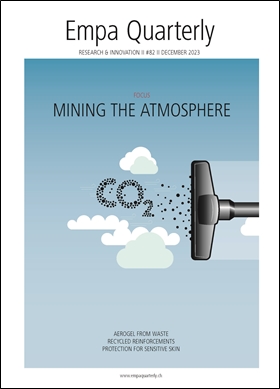
Empa Quarterly#82 Mining the Atmosphere
To limit climate change, we need to compensate not only for future emissions, but also for historical ones. One solution would be the "atmospheric vacuum cleaner": we remove the excess CO2 from the atmosphere. But what do we do with it? Instead of extracting the carbon for polymers, medicines, fibers, fuels and the like from crude oil, we use atmospheric CO2. This is the simple – yet extremely challenging in technical terms – idea behind Empa's new research initiative, Mining the Atmosphere.
Read the EmpaQuarterly online or download the pdf-version.
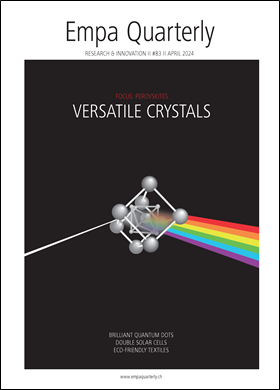
Empa Quarterly#83 Perovskites: Versatile cristals
Over 180 years ago, a curious crystal was discovered in the Ural Mountains. Today, it has given rise to an entire class of materials that is of great interest to researchers: perovskites. What all perovskites have in common is their crystal structure, which gives them unusual properties. By changing the exact composition of the perovskite, scientists can control these properties. Empa researchers are using this promising material to develop solar cells, detectors and quantum dots.
Read the EmpaQuarterly online or download the pdf-version.
-
Share

|
Rating railroad noise Acoustic experts created a simulation tool for railroad noise. This will help to develop technical and structural measures that are particularly effective to prevent or at least reduce the stressful sounds. |
|
NEST Podcast |
| The future of construction |
|
«Hey Aurora» Empa researchers want to accelerate the development of energy storage systems with the help of the Aurora battery robot. The European research initiative Battery2030+ was recently awarded 150 million euros by the EU. |






